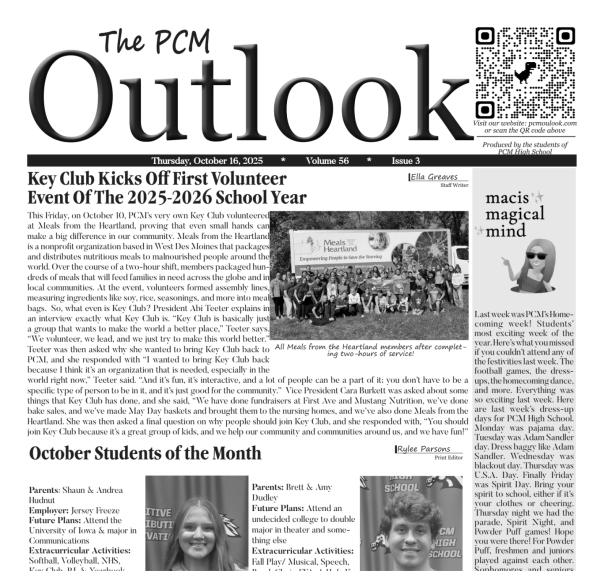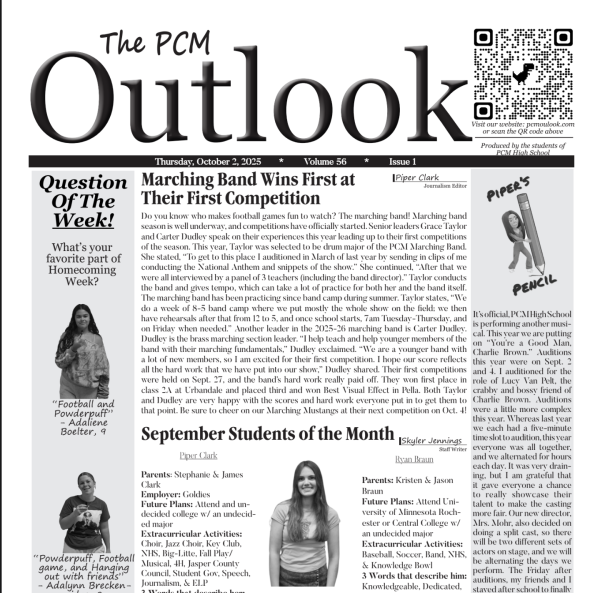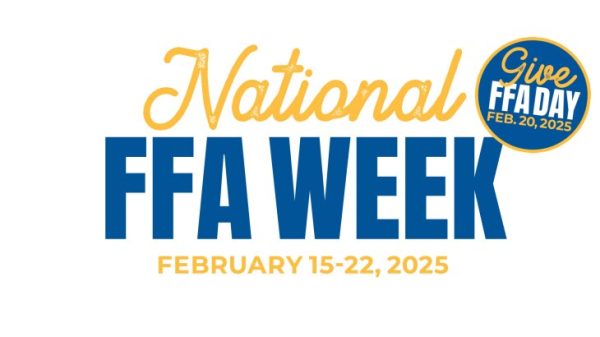Rotting produce: how small grocery has faded away
A desolate moment in a land of plenty, the produce section of a Walmart sits in quiet abandon.
Throughout the novel “What’s Eating Gilbert Grape,” we routinely return to a local feud between two stores. The first of these is Lamson Grocery, a locally owned store operated by Mr. Lamson, his wife, the titular Gilbert Grape, and a handful of local teenagers who rotate in and out of the location. The store is small, containing, “everything a reasonable person requires.”
In direct competition with Lamson Grocery is food land, a Supermarket if there ever was one. Food land is a massive chain in the fiction of the book. The store contains just about everything one could possibly wish to buy from a grocery store. It has an inbuilt bakery, a lobster tank, “every cereal imaginable,” and still all those goods which people in the area need to sustain themselves, all of which are cheaper here than at Lamson Grocery. As the novel goes on it becomes increasingly apparent that Lamson grocery is losing the battle between the two stores. Food land seems almost entirely unaware there even is a battle going on in the first place.
“In Endora, there are two grocery stores. Smack on the town square is Lamson Grocery, where I work, and on the edge of town, there is Food Land, where everybody else shops.” (Hedges 26)
Written by Peter Hedges, What’s Eating Gilbert Grape was published in 1991. 30 years have since passed, and those words remain as relevant as ever.
Near the square in Monroe sits a small grocery store named Monroe Foods. More colloquially known as Pete’s, the store has managed to become a staple of the small town. It’s currently owned and run by Pete Peterson and his wife. Peterson shared some of the history of the store.
“This has always been a grocery store. It was opened by Jane Fenemaw and her husband Carl back in 1963; that’s when the building was built. They had it for a number of years, and then Bart Puter bought the business from them and ran the business out of this location up until 1993; that’s when I purchased it.”
There is an undeniable warmth to the atmosphere in the store. To many, it feels like that friendly grocery store that many associate with small-town stores. As people came in during this interview with him, Pete made an effort to greet every customer coming in by name.
“Even though I didn’t grow up here, I know everybody, pretty much, if not by name then by face, if they come in. That’s how it is in a small town; everybody knows everybody.”
While this detail and other small things like it are hardly enough to sustain a business on their own, it is difficult to deny that they do grant the place a certain charm and sense of real homeliness which is often lost elsewhere.
The world of business, both big and small, is in large part governed by a single guiding principle; That which makes money survives, that which doesn’t dies. The more money a business makes, in theory, the more likely it is to survive. If a business is consistently losing money, in theory, it will surely die. There are of course exceptions to both of these – in 2008 the phrase ‘too big to fail’ pervaded the minds of many as the banking system rapidly fell apart despite being seemingly secure in years previous, still managing to fail despite making considerable profits before. Uber and other similar tech companies have been able to survive off of venture capital and the money of its investors despite losing millions, sometimes billions of dollars each year, and thus still managing to survive despite never actually bringing in profit – Generally speaking though, these are the rare exceptions to the rule. As such, it is usually within the best interests of a business to expand and grow far beyond its original reach. Likewise, businesses that fail to take the opportunity to expand, or that prioritize local stability over perpetual growth and increasing profits are often unable to compete with their larger and more powerful competitors.
In the late ‘90s a historic, if mildly frightening, line was crossed. As reported by the Wall Street Journal, for the first time in modern history, within the U.S. more people were now employed by Large employers (defined as having more than 2500 employees), than were employed by small employers (defined as having fewer than 100 employees). This trend has only continued into the present and the gap between the two has only widened considerably.
In a survey put out to the students and staff of PCM High School, only 1.9 percent of respondents stated that they had primarily gotten their groceries from Monroe Foods. That’s 3 individuals out of the 158 who responded to the survey; 4 counting one who stated that they split their shopping between Target and Pete’s. 43.9 percent stated that they had at least shopped at Monroe Foods once in the last year; a frankly tiny figure when compared to the 85.2 percent who had shopped at Walmart, or the 81.3 percent who had shopped at Hy-Vee. This is all despite the fact that for the majority of students, who largely live in either Prairie City or Monroe, the drive to the nearest Walmart or Hy-Vee is considerably longer.
A significant portion of the reason for the difference in traffic between these stores can likely be chalked up to the issues of price and selection. As recorded on Sept. 6, prices at Monroe foods were almost universally more expensive than those same items were at the Pella Walmart. This, though, varied quite significantly depending on the item; Some items, like AE 2% Milk only varied by a few cents depending on location, 5.45 at Monroe Foods versus 5.24 at Walmart. Others though were far more egregious; Tropicana Orange Juice was 5.85 at Monroe Foods and 3.78 at Walmart, a difference of over 2 dollars. That is not to say that there are no exceptions to the previous price discrepancies; 24oz AE cottage cheese was actually 7 cents cheaper at Monroe Foods, at 4.05, when compared to Walmart which sold the same item at 4.12. But these exceptions are just that, rare exceptions to a rule which is otherwise perfectly solid. The expiration date for the items investigated were in most cases the exact same or only different by a few days, indicating that for the most part, the items had even been a part of the same production runs from their manufacturers.
From a business perspective, these discrepancies make total sense. The more market share a company holds the more power it wields to set prices for itself and to purchase wholesale goods. If Monroe Foods stops buying a product from a vendor, unless they are dependent on local distributors, it is unlikely that that vendor will see a significant decline in their profits, and so that vendor is unlikely to go far out of their way to maintain Monroe Foods as a distributor. This lack of market power applies to other small businesses as well.
On the flip side of the coin, if Walmart were to stop buying from any given vendor the loss of that sales outlet would constitute a much more significant and much more dangerous loss. For many of the businesses whose products are sold at these stores, not selling their product to Walmart or any other retailer with a comparable market share, would seriously endanger their stability. Manufacturers are thus much more willing to bend to the will of these large retailers and offer a much lower price to them in order to maintain some kind of business relationship. This gives Walmart and other comparable corporations that hold significant portions of the market the ability to control the prices at which sellers are able to sell their goods. Furthermore, even if large retailers choose not to manipulate the market in this way, the mere fact that they could manipulate the market will often skew power dynamics towards them, giving those retailers substantial unilateral power anyways.
There are several federal laws dating back to the gilded age in place to stop this sort of market manipulation. These laws, referred to as antitrust laws, are often only loosely enforced if they are enforced at all. Furthermore, what federal laws did exist to protect small businesses from these sorts of actions by larger corporations were at least partially gutted and dismantled over the last century, and movements for modern reform have typically been short-lived and ineffective.
Likewise, products are often individually cheaper and less labor-intensive to package and manufacture the grander the scale of their production becomes. Where it may be time-consuming and expensive to package a product one by one by hand, it typically takes far less time and far less labor for a massive machine to do the same packaging work on the scale of thousands or tens of thousands of products, which in turn means that the more of a product that is sold, the cheaper it becomes, and so the more a product is ordered from a business the cheaper they are able to sell it. In the world of wholesale goods, this often manifests in that manufacturers will sell their goods for less when more is being sold. While often only manifesting as a few pennies of each individual component of a good, these savings add up to products that for the end consumer can become significantly cheaper. Again, power here skews towards those larger retailers.
At Walmart there seems to be an embarrassment of riches as far as selection goes; the actual contents of the store seem to be pushed to the point of near absurdity. The grocery section alone seems to be 2 or 3 times bigger than Monroe foods is in its totality, not to mention all of the other miscellaneous goods which Walmart happens to carry.
While wandering the seemingly endless isles of the store, one can end up stumbling into a number of products for which the very existence of is rather confounding. From a DVD containing two separate Scooby Doo-Batman crossover specials that were created over half a century apart, to an Among Us themed mystery crate which promised one of 18 different collectible figures, it can be difficult to imagine a single product that Walmart doesn’t carry in at least some form.
Despite everything, Monroe Foods has still managed to remain strong into the present. Peterson referred to it as a “very viable business.” A sentiment that has only been helped by the recent pandemic, which seems to have returned quite a lot of business to the store as people sought to stay as close to home as possible.
Peterson recounts this stating, “When Covid hit 3 years ago things just exploded. It was pretty crazy there for a year, year and a half, and it’s leveled off. A lot of those people who shopped here because of covid have stayed on, and are still shopping with us.”
Even with the temporarily boosted business, Pete Peterson himself is unlikely to be able to run the store forever; a fact which he seemed incredibly aware of during his interview. He and his wife are now rapidly nearing retirement, and are now looking to soon move onto the “next chapter” of their lives.
“We’ve been here for 30 years. We’ve built a business, we’ve had competition come in and that hurt us a little bit for a few months, and then the business came back. We’ve had a good run here; We’re ready to go onto another chapter, hopefully retire someday.”
Unfortunately, it’s likely one can already deduce how this story ends. Sugars, another local grocery store in the nearby town of Colfax closed last year under similar pressures; an aging owner coupled with nearby competition and a combination of pricing and selection that it simply couldn’t compete with. It has since been replaced with a Fareway. One of over 100 other Fareways in the state.
“In Endora, there are two grocery stores. Smack on the town square is Lamson Grocery, where I work, and on the edge of town, there is Food Land, where everybody else shops.”

I’m Justin Hall and this is my first year doing Journalism. My work here often focuses on systemic issues and the stories of the people who face them....







Doug • Oct 4, 2022 at 11:02 am
cool story bro.
Charity Abbott • Sep 28, 2022 at 3:01 pm
Good write up Justin!